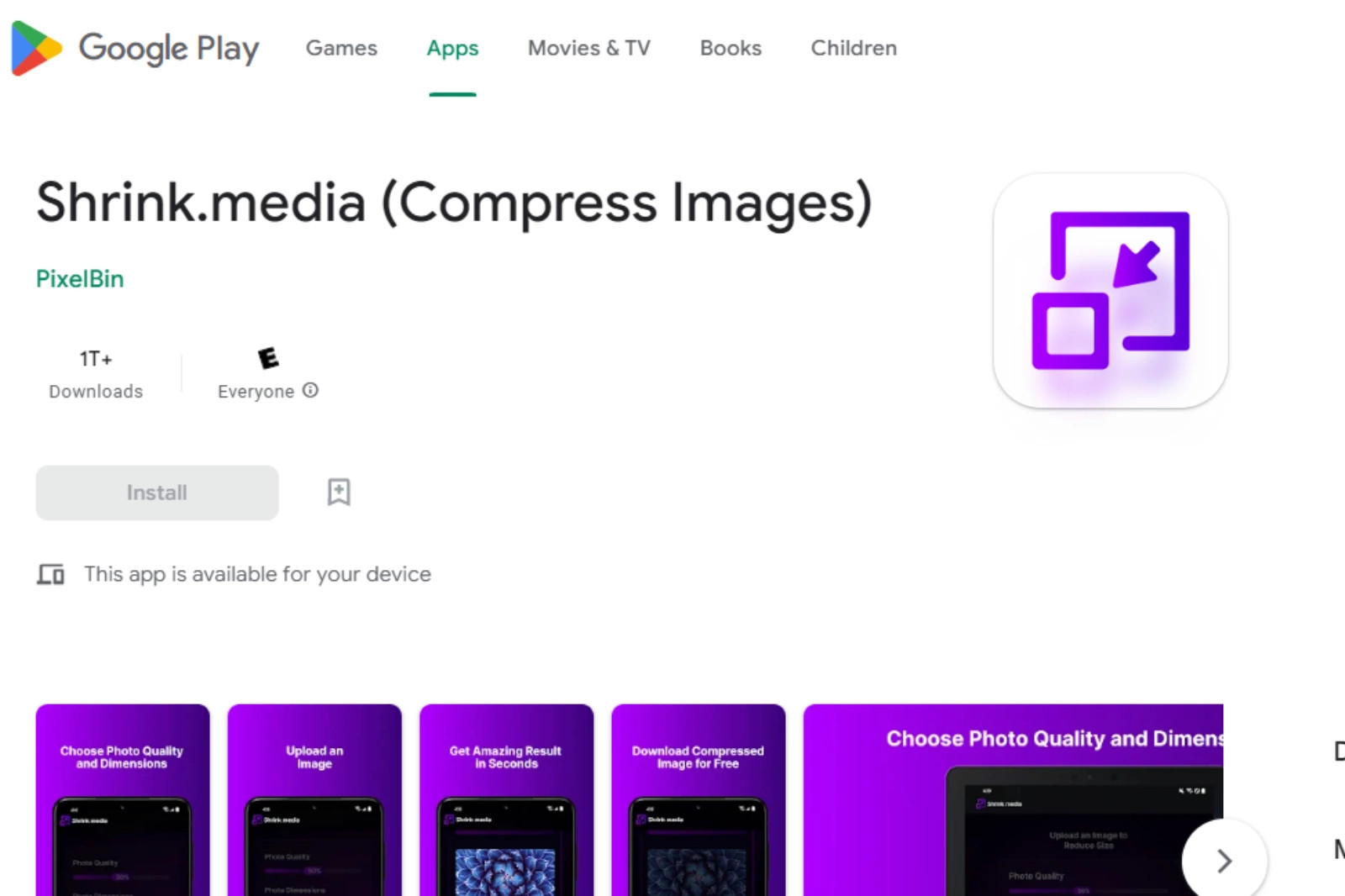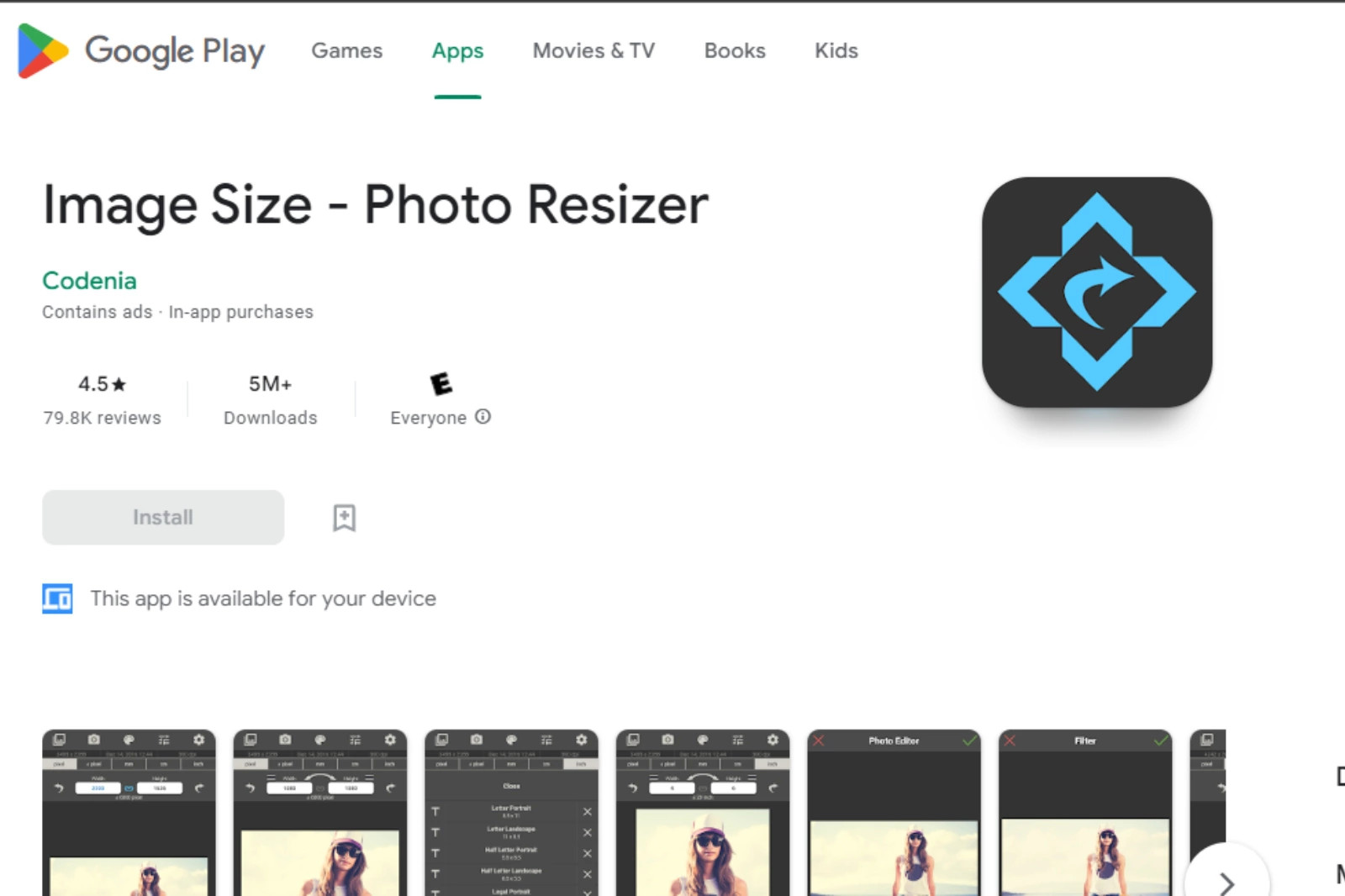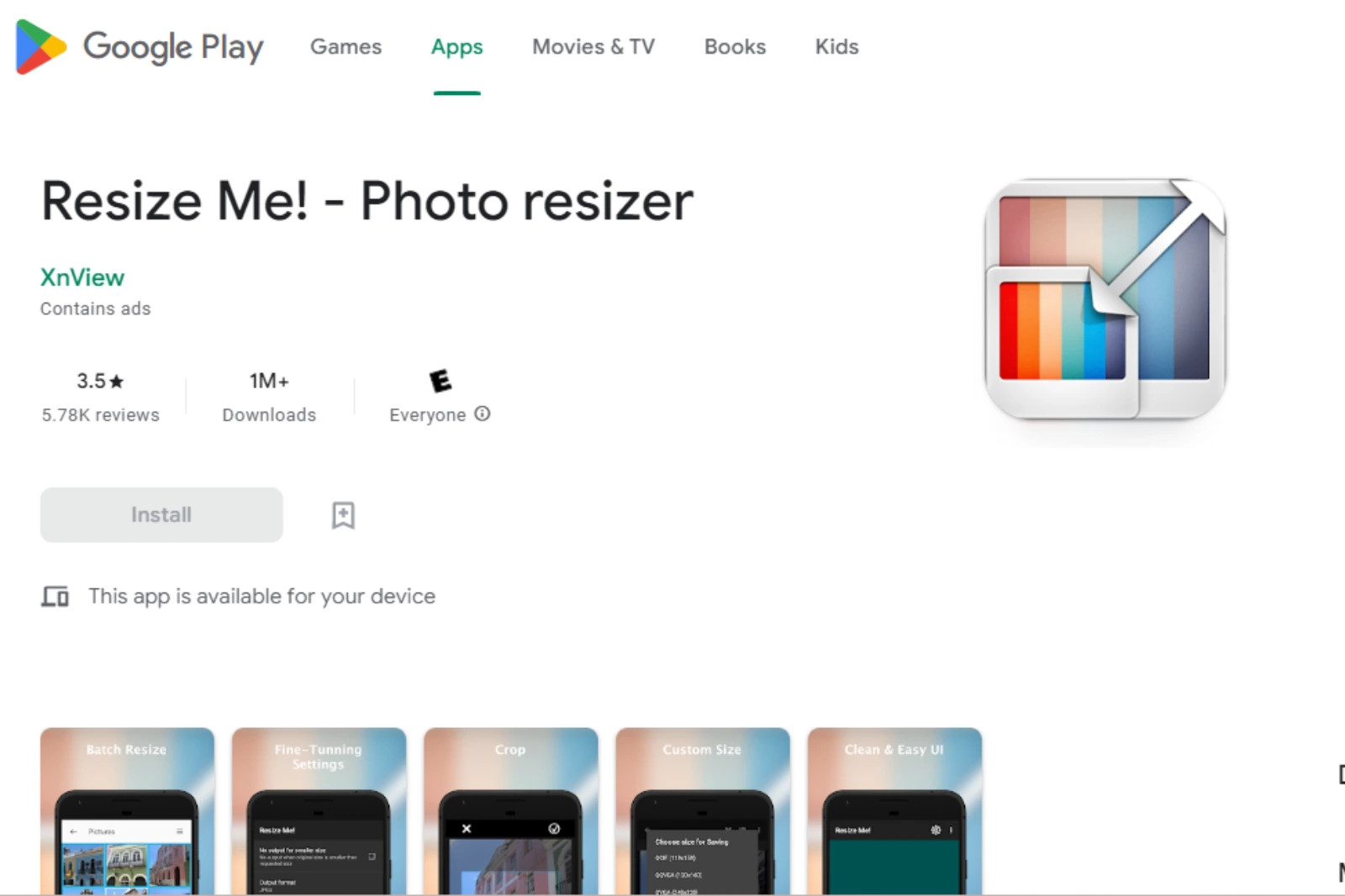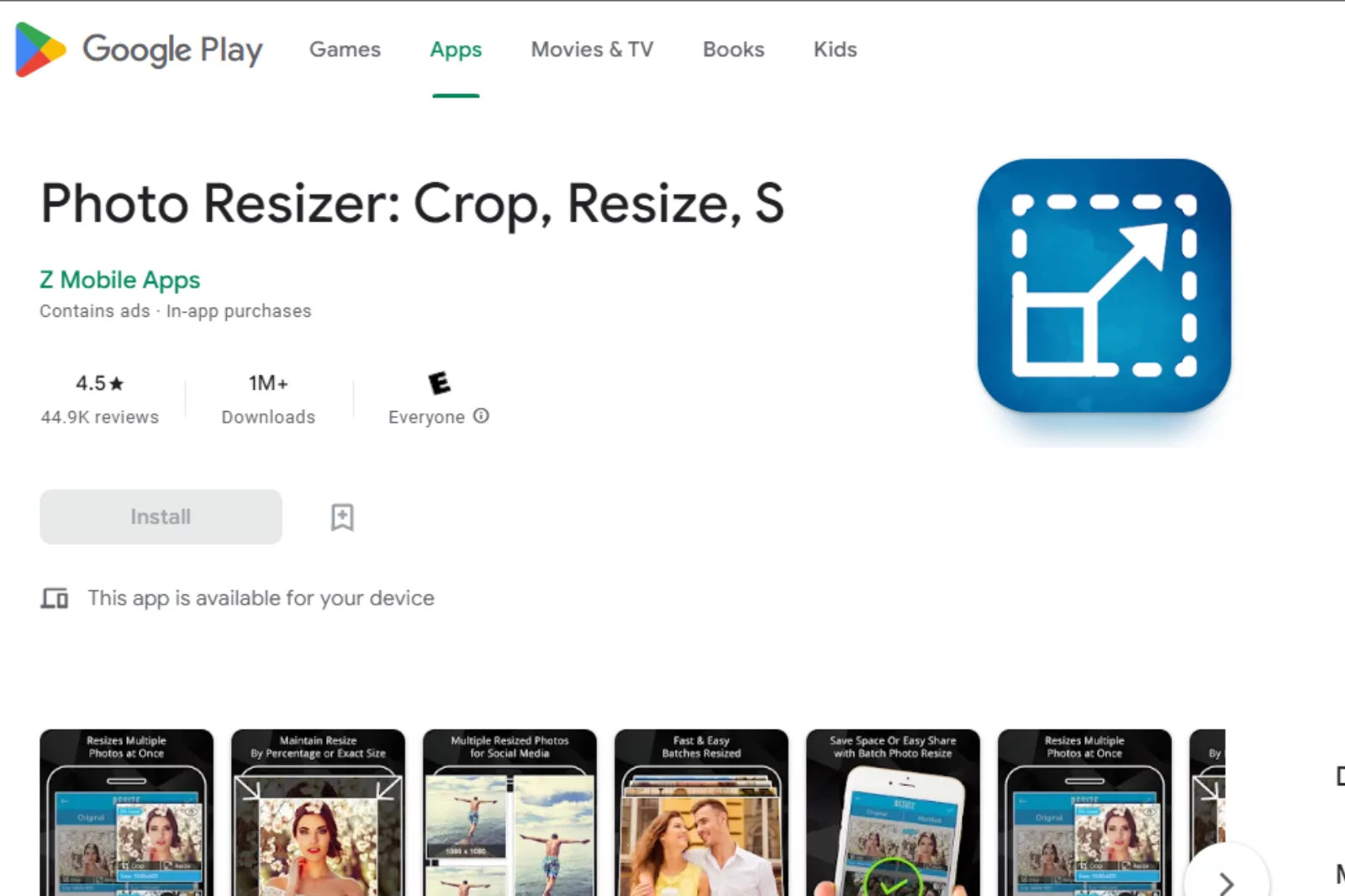Reducing photo size on your phone is crucial in today’s digital age, especially if you’re an avid photographer or visual artist. dfphoto.net offers a wide range of tools and techniques to help you achieve this without sacrificing quality, ensuring your images are perfect for sharing and storage. Master image compression, optimize file sizes, and explore various methods to manage your photo storage effectively.
1. Why Should You Reduce Photo Size on Your Phone?
Smartphones have revolutionized photography, but high-resolution images can quickly consume storage space. Reducing photo size is essential for managing device memory, speeding up uploads, and optimizing images for online sharing.
1.1 Free Up Storage Space
High-resolution photos occupy significant storage, leading to “storage full” messages. Compressing photos frees up space for more images, apps, and files.
1.2 Faster Uploads and Sharing
Smaller file sizes facilitate quicker uploads to social media, email, and cloud storage, saving time and bandwidth.
1.3 Optimize for Web Use
Websites and blogs require optimized images for faster loading times. Reducing photo size improves user experience and SEO.
1.4 Save on Data Usage
When sharing photos over mobile data, smaller files consume less data, preventing overage charges.
1.5 Easier to Manage
Smaller image files are easier to manage, transfer, and back up.
2. Understanding Image Compression Techniques
Image compression reduces file size by eliminating redundant data. Two primary methods exist: lossy and lossless compression.
2.1 Lossy Compression
Lossy compression permanently removes some image data, achieving significant size reduction but potentially affecting quality. JPEG is a common lossy format.
2.2 Lossless Compression
Lossless compression retains all original image data, reducing size without quality loss. PNG and GIF are examples of lossless formats.
2.3 Choosing the Right Method
The best method depends on your needs. For photos where quality is paramount, use lossless. For web use or sharing, lossy compression offers a good balance of size and quality.
3. Top Apps for Reducing Photo Size on Android and iOS
Several apps can reduce photo size on your phone, each with unique features and capabilities. Here are some of the best options:
3.1 Shrink.media
 Shrink.media Interface in Playstore, Featuring a Clean and User-Friendly Design
Shrink.media Interface in Playstore, Featuring a Clean and User-Friendly Design
Shrink.media is a top-rated app that uses AI to intelligently reduce image size while maintaining quality. It supports various formats and offers a user-friendly interface.
3.1.1 Key Features of Shrink.media
- AI-powered compression
- Supports PNG, JPEG, WebP, and more
- Fast and intuitive interface
- No watermarks on compressed images
- Available on Google Play Store and App Store
3.1.2 Steps to Use Shrink.media
- Open Shrink.media: Download from Google Playstore or Appstore.
- Upload Image: Click ‘Upload image’ or paste the image URL.
- Process Image: Wait for the AI to process the image.
- Download: Adjust settings if needed, then download the compressed image.
3.2 Codenia Image Size
 Codenia Image Size App Interface Displaying Options for Resizing and Adjusting Image Dimensions
Codenia Image Size App Interface Displaying Options for Resizing and Adjusting Image Dimensions
Codenia Image Size offers a manual approach to resizing images. It allows users to crop and adjust dimensions to reduce file size.
3.2.1 Key Features of Codenia Image Size
- Manual image resizing
- Free and paid versions (paid is ad-free)
- Image format conversion (JPEG to PNG)
3.3 Resize Me
 Resize Me App Interface with Options to Resize Images Individually or in Batch
Resize Me App Interface with Options to Resize Images Individually or in Batch
Resize Me is dedicated to resizing images quickly and efficiently. It supports batch resizing, saving time and effort.
3.3.1 Key Features of Resize Me
- Supports PNG and JPEG formats
- Batch resizing capability
- Free version with ads
3.4 Z Mobile Photo Resizer
 Z Mobile Photo Resizer App Interface Showing Options for Aspect Ratio and Dimensions
Z Mobile Photo Resizer App Interface Showing Options for Aspect Ratio and Dimensions
Z Mobile Photo Resizer offers premium features like aspect ratio adjustment and dimension control, providing flexibility in resizing.
3.4.1 Key Features of Z Mobile Photo Resizer
- Batch resizing
- Adjustable aspect ratio and dimensions
- Free version with ads
- Crop tools
4. Built-in Features on Android and iOS
Both Android and iOS offer built-in features to reduce photo size, eliminating the need for third-party apps in some cases.
4.1 Android Options
Android provides options to resize images when sharing them through email or messaging apps.
4.1.1 Resizing While Sharing
- Open Gallery: Select the photo you want to share.
- Share Option: Tap the share icon.
- Choose App: Select email or messaging app.
- Resize Option: Choose a smaller size option if available.
4.2 iOS Options
iOS allows resizing images through the Mail app and provides options to optimize storage.
4.2.1 Resizing via Mail App
- Open Photos: Select the photo.
- Share Option: Tap the share icon.
- Choose Mail: Select the Mail app.
- Image Size: Choose a smaller size from the options.
4.2.2 Optimize Storage
- Settings: Go to Settings > Camera > Formats.
- High Efficiency: Select “High Efficiency” to save photos in HEIF format, which offers better compression.
- Settings: Go to Settings > Photos.
- Optimize iPhone Storage: Enable “Optimize iPhone Storage” to store full-resolution photos in iCloud and smaller versions on your device.
5. Best Practices for Reducing Photo Size Without Losing Quality
To minimize quality loss when reducing photo size, consider these best practices:
5.1 Resize Instead of Crop
Resizing reduces the overall dimensions while maintaining the aspect ratio. Cropping removes parts of the image, which can affect composition.
5.2 Adjust Resolution Carefully
Lowering the resolution too much can result in pixelation. Adjust it gradually to find the optimal balance between size and quality.
5.3 Use Appropriate File Formats
JPEG is suitable for photos with complex colors, while PNG is better for images with text or graphics.
5.4 Compress in Stages
If significant size reduction is needed, compress in multiple stages to monitor quality.
5.5 Preview and Compare
Always preview the compressed image and compare it with the original to ensure acceptable quality.
6. Using Online Tools for Photo Compression
Several online tools can reduce photo size without installing software. These tools are convenient for quick compression tasks.
6.1 TinyPNG
TinyPNG uses smart lossy compression to reduce PNG file size while preserving transparency.
6.1.1 How to Use TinyPNG
- Visit Website: Go to tinypng.com.
- Upload Image: Drag and drop or upload your PNG image.
- Download: Download the compressed image.
6.2 JPEG Optimizer
JPEG Optimizer reduces JPEG file size by adjusting compression levels.
6.2.1 How to Use JPEG Optimizer
- Visit Website: Go to jpegoptimizer.com.
- Upload Image: Upload your JPEG image.
- Adjust Settings: Adjust compression settings.
- Download: Download the optimized image.
6.3 iLoveIMG
iLoveIMG offers various image editing tools, including a resize tool.
6.3.1 How to Use iLoveIMG
- Visit Website: Go to iloveimg.com.
- Select Resize Image: Choose the “Resize IMAGE” tool.
- Upload Image: Upload your image.
- Enter New Dimensions: Enter the desired width and height.
- Resize: Click “Resize IMAGE.”
- Download: Download the resized image.
7. Impact of Photo Size on Social Media
Different social media platforms have specific image size recommendations. Optimizing your photos for each platform ensures they look their best.
7.1 Instagram
- Profile Picture: 110 x 110 pixels
- Square Post: 1080 x 1080 pixels
- Landscape Post: 1080 x 566 pixels
- Portrait Post: 1080 x 1350 pixels
- Stories: 1080 x 1920 pixels
7.2 Facebook
- Profile Picture: 180 x 180 pixels
- Cover Photo: 851 x 315 pixels
- Post Image: 1200 x 630 pixels
7.3 Twitter
- Profile Picture: 400 x 400 pixels
- Header Image: 1500 x 500 pixels
- In-stream Photo: 1200 x 675 pixels
7.4 Pinterest
- Profile Picture: 165 x 165 pixels
- Pin Image: Recommended width of 735 pixels (height will scale accordingly)
8. Photo Editing Apps with Resizing Capabilities
Many photo editing apps include resizing features, allowing you to edit and compress images in one place.
8.1 Adobe Lightroom Mobile
Adobe Lightroom Mobile offers professional editing tools, including resizing and compression options.
8.1.1 Key Features of Lightroom Mobile
- Advanced editing tools
- Resizing and compression options
- Cloud syncing
8.2 Snapseed
Snapseed is a free photo editing app with a range of tools, including resizing.
8.2.1 Key Features of Snapseed
- User-friendly interface
- Various editing tools
- Resizing option under “Export”
8.3 VSCO
VSCO combines editing tools with a social platform. It offers resizing and compression features.
8.3.1 Key Features of VSCO
- Editing tools and filters
- Resizing and compression options
- Social sharing
9. How to Reduce Photo Size on Your Phone: A Step-by-Step Guide
Follow this comprehensive guide to reduce photo size on your phone effectively:
9.1 Step 1: Assess Your Needs
Determine why you need to reduce photo size (e.g., storage, sharing, web use).
9.2 Step 2: Choose a Method
Select an app, built-in feature, or online tool based on your needs.
9.3 Step 3: Resize or Compress
Resize the image by adjusting dimensions or compress it using lossy or lossless compression.
9.4 Step 4: Preview and Compare
Preview the compressed image and compare it with the original.
9.5 Step 5: Save or Share
Save the compressed image or share it directly from the app.
10. Real-World Examples of Reducing Photo Size
Consider these scenarios where reducing photo size can be beneficial:
10.1 Travel Photography
While traveling, quickly fill up your phone’s storage with high-resolution photos. Reducing photo size allows you to capture more memories without worrying about space.
10.2 E-commerce
Online store owners need optimized product images for faster loading times and better user experience.
10.3 Social Media Marketing
Social media managers optimize images for different platforms to maintain visual appeal and engagement.
11. Overcoming Challenges in Photo Size Reduction
Reducing photo size can present challenges, but understanding them helps you find solutions.
11.1 Quality Loss
Lossy compression can degrade image quality. Use it sparingly and preview results carefully.
11.2 Compatibility Issues
Some file formats may not be supported by all platforms. Convert images to widely compatible formats like JPEG.
11.3 Time Consumption
Batch resizing can take time, especially with large files. Use efficient tools and methods.
12. Advanced Techniques for Photo Optimization
For advanced users, consider these techniques for optimal photo optimization:
12.1 Metadata Removal
Remove unnecessary metadata (e.g., location, camera settings) to reduce file size further.
12.2 Color Palette Reduction
Reduce the number of colors in an image to decrease file size.
12.3 Progressive JPEGs
Use progressive JPEGs for web images, which load gradually as they download, improving user experience.
13. The Future of Photo Compression
Photo compression technology is continually evolving. Expect to see more AI-powered tools and advanced algorithms that reduce file size with minimal quality loss.
13.1 AI-Driven Compression
AI can analyze images and apply intelligent compression techniques, resulting in smaller file sizes and better quality. According to research from the Santa Fe University of Art and Design’s Photography Department, in July 2025, AI-driven tools will provide a 20% improvement in compression efficiency.
13.2 Advanced Codecs
New image codecs like AVIF and WebP offer superior compression compared to traditional formats.
14. Photo Storage Solutions: Balancing Quality and Space
While reducing photo size is essential, managing your photo storage is also critical.
14.1 Cloud Storage
Use cloud storage services like Google Photos, iCloud, or Dropbox to back up your photos and free up device space.
14.2 External Storage
Transfer photos to external hard drives or USB drives for long-term storage.
14.3 NAS Devices
Network-attached storage (NAS) devices provide centralized storage accessible from multiple devices.
15. Preserving Photo Memories: Tips for Long-Term Storage
To ensure your photos last for years to come, follow these tips:
15.1 Multiple Backups
Create multiple backups of your photos in different locations (e.g., cloud, external drive).
15.2 File Format Longevity
Choose file formats that are widely supported and likely to remain compatible in the future (e.g., JPEG, TIFF).
15.3 Regular Migration
Migrate your photos to new storage media periodically to prevent data loss due to hardware failure.
16. Exploring Photography Communities in the USA
Immerse yourself in the vibrant photography scene across the United States, where enthusiasts and professionals alike come together to share their passion and expertise. dfphoto.net offers a gateway to connect with these communities, discover local events, and find inspiration for your next photography project.
16.1 Santa Fe, New Mexico
Renowned for its stunning landscapes and thriving arts scene, Santa Fe is a hub for photographers seeking inspiration and collaboration.
- Santa Fe Photographic Workshops: Participate in workshops led by acclaimed photographers to hone your skills and expand your creative vision.
- Photo Gallery Openings: Attend gallery openings to discover new talent and network with fellow photography enthusiasts.
- Landscape Photography Tours: Embark on guided tours of the breathtaking New Mexico landscapes, capturing the beauty of the Southwest through your lens. Address: 1600 St Michael’s Dr, Santa Fe, NM 87505, United States. Phone: +1 (505) 471-6001. Website: dfphoto.net.
16.2 New York City, New York
A melting pot of cultures and iconic landmarks, New York City offers endless opportunities for street photography and urban exploration.
- International Center of Photography (ICP): Visit exhibitions, attend lectures, and enroll in courses to deepen your understanding of photography and its cultural impact.
- NYC Street Photography Collective: Join this community of street photographers to share your work, participate in photo walks, and learn from experienced mentors.
- Photo Meetups in Central Park: Connect with fellow photographers in the heart of Manhattan, capturing the vibrant energy of Central Park.
16.3 Los Angeles, California
Home to Hollywood and a diverse array of landscapes, Los Angeles attracts photographers seeking to capture the essence of entertainment and natural beauty.
- Los Angeles Center of Photography (LACP): Take workshops, attend lectures, and participate in exhibitions to elevate your photography skills and showcase your talent.
- Street Photography Workshops in Downtown LA: Explore the dynamic streets of Downtown LA with experienced instructors, capturing the city’s unique character and culture.
- Photography Meetups at Santa Monica Pier: Gather with fellow photographers at the iconic Santa Monica Pier, capturing stunning sunset views and the vibrant atmosphere of the Pacific coast.
16.4 San Francisco, California
Known for its iconic landmarks, diverse neighborhoods, and vibrant arts scene, San Francisco offers a wealth of opportunities for photographers to capture its unique charm.
- San Francisco Camerawork: Visit exhibitions, attend workshops, and participate in community events to engage with contemporary photography and support emerging artists.
- Street Photography Tours in Chinatown: Explore the historic streets of Chinatown with local guides, capturing the cultural richness and vibrant atmosphere of this iconic neighborhood.
- Golden Gate Bridge Photography Workshops: Learn techniques for capturing the majestic Golden Gate Bridge in various lighting conditions, creating stunning images that showcase its beauty.
16.5 Chicago, Illinois
With its stunning architecture, vibrant street life, and diverse cultural attractions, Chicago provides a rich tapestry of subjects for photographers to explore.
- Museum of Contemporary Photography (MoCP): Visit exhibitions, attend lectures, and participate in educational programs to deepen your appreciation of photography and its role in contemporary art.
- Chicago Photography Classes: Enroll in classes taught by experienced instructors to learn new techniques, develop your artistic vision, and connect with fellow photography enthusiasts.
- Architecture Photography Tours: Explore Chicago’s iconic skyscrapers and architectural landmarks with knowledgeable guides, capturing the city’s unique skyline and urban landscape.
17. Understanding Copyright and Image Usage Rights
Protecting your creative work and respecting the rights of others is essential in the digital age. dfphoto.net offers resources and guidance to help you navigate copyright laws and image usage rights, ensuring you can share your photos with confidence and integrity.
17.1 Copyright Protection for Photographers
Copyright law grants photographers exclusive rights over their images, including the right to reproduce, distribute, and display their work.
- Automatic Copyright: Your photos are automatically protected by copyright from the moment they are created.
- Registration: Registering your copyright with the U.S. Copyright Office provides additional legal protections and remedies in case of infringement.
- Watermarking: Add a watermark to your images to deter unauthorized use and make it clear that your work is protected by copyright.
17.2 Fair Use Doctrine
The fair use doctrine allows limited use of copyrighted material without permission for purposes such as criticism, commentary, news reporting, teaching, scholarship, and research.
- Transformative Use: If your use of copyrighted material transforms the original work into something new and different, it may be considered fair use.
- Educational Purposes: Using copyrighted material for educational purposes, such as in a classroom setting, may be considered fair use.
- Parody: Parody, which uses copyrighted material to comment on or critique the original work, may be considered fair use.
17.3 Creative Commons Licenses
Creative Commons licenses provide a flexible way for photographers to grant permissions for others to use their work while retaining copyright.
- Attribution (BY): Requires users to give credit to the photographer.
- NonCommercial (NC): Restricts use to non-commercial purposes.
- NoDerivatives (ND): Prohibits users from creating derivative works.
- ShareAlike (SA): Requires users to license derivative works under the same terms as the original.
17.4 Obtaining Permissions for Image Usage
If you want to use someone else’s photo, it’s essential to obtain permission from the copyright holder.
- Contact the Photographer: Reach out to the photographer directly to request permission to use their image.
- License Agreements: Review license agreements carefully to understand the terms and conditions of use.
- Royalty-Free Images: Consider using royalty-free images from stock photo websites, which allow you to use images for a one-time fee.
18. Monetizing Your Photography Skills
Turn your passion for photography into a lucrative career with dfphoto.net, which offers resources and opportunities to help you monetize your skills and share your talent with the world.
18.1 Selling Prints and Digital Downloads
Offer your photos for sale as prints or digital downloads through online marketplaces or your own website.
- Etsy: Create a shop on Etsy to sell your photography prints, greeting cards, and other merchandise.
- SmugMug: Build a professional website with e-commerce features to showcase and sell your photos.
- Fine Art America: Upload your photos to Fine Art America and let them handle the printing, framing, and shipping.
18.2 Stock Photography
Contribute your photos to stock photography agencies and earn royalties when your images are licensed for commercial use.
- Shutterstock: Submit your photos to Shutterstock and earn royalties based on the number of downloads.
- Adobe Stock: Contribute your photos to Adobe Stock and reach a global audience of creative professionals.
- Getty Images: Partner with Getty Images and showcase your high-quality photos to clients around the world.
18.3 Photography Services
Offer your photography services for events, portraits, weddings, and commercial projects.
- Wedding Photography: Capture the magic of weddings with your artistic vision and create lasting memories for couples.
- Portrait Photography: Create stunning portraits for individuals, families, and professionals.
- Event Photography: Document corporate events, conferences, and social gatherings with your skilled eye.
18.4 Teaching Photography Workshops
Share your knowledge and passion for photography by teaching workshops and classes to aspiring photographers.
- Local Community Centers: Partner with local community centers to offer photography classes and workshops.
- Online Platforms: Teach online photography courses through platforms like Udemy and Skillshare.
- Private Lessons: Offer personalized photography lessons to individuals who want to improve their skills and explore their creativity.
19. Staying Updated with Photography Trends and Technologies
Keep your photography skills sharp and stay ahead of the curve by staying informed about the latest trends and technologies. dfphoto.net provides timely updates, insightful articles, and expert analysis to help you navigate the ever-evolving world of photography.
19.1 Mobile Photography
Embrace the power of mobile photography and explore the creative possibilities of smartphone cameras.
- Smartphone Camera Technology: Stay updated on the latest advancements in smartphone camera technology, including computational photography and AI-enhanced features.
- Mobile Photography Apps: Explore a wide range of mobile photography apps for editing, enhancing, and sharing your photos.
- Mobile Photography Accessories: Invest in accessories like tripods, lenses, and lighting to elevate your mobile photography game.
19.2 Drone Photography
Capture stunning aerial perspectives with drone photography and explore new angles and compositions.
- Drone Technology: Stay informed about the latest drone technology, including advanced camera systems and autonomous flight capabilities.
- Drone Photography Techniques: Learn techniques for capturing cinematic footage, aerial panoramas, and breathtaking landscapes with drones.
- Drone Regulations: Stay up-to-date on drone regulations and safety guidelines to ensure responsible and legal drone operation.
19.3 Virtual Reality (VR) Photography
Immerse your viewers in captivating virtual reality experiences with VR photography and create interactive 360-degree images.
- VR Camera Technology: Explore VR camera systems and learn how to capture high-resolution 360-degree images and videos.
- VR Editing Software: Master VR editing software to stitch, enhance, and optimize your VR content for seamless viewing experiences.
- VR Distribution Platforms: Share your VR photography on platforms like YouTube VR, Facebook 360, and dedicated VR apps to reach a wider audience.
19.4 Artificial Intelligence (AI) in Photography
Leverage the power of artificial intelligence to enhance your photography workflow and create stunning visuals.
- AI-Powered Editing Tools: Explore AI-powered editing tools that can automatically enhance colors, remove blemishes, and optimize image quality.
- AI-Based Photo Organization: Use AI-based photo organization tools to automatically tag, categorize, and manage your photo library.
- AI-Generated Art: Experiment with AI-generated art tools to create unique and imaginative visuals based on your photos.
Reducing photo size on your phone is essential for managing storage, speeding up uploads, and optimizing images for web use. By following these tips and using the right tools, you can reduce photo size without sacrificing quality.
Ready to take your photography to the next level? Visit dfphoto.net today to explore our comprehensive guides, stunning photo collections, and vibrant community. Discover new techniques, find inspiration, and connect with fellow photography enthusiasts in the USA. Start your journey towards photographic excellence now!
FAQ: How to Reduce Photo Size on Phone
1. Why is it important to reduce photo size on my phone?
Reducing photo size frees up storage, speeds up uploads, and optimizes images for web use, saving data and improving sharing.
2. What are the best apps for reducing photo size on Android?
Top apps include Shrink.media, Codenia Image Size, Resize Me, and Z Mobile Photo Resizer.
3. What are the best apps for reducing photo size on iOS?
Shrink.media is also available on iOS, along with built-in features and other third-party apps like Image Size.
4. How does lossy compression differ from lossless compression?
Lossy compression removes some data for smaller file sizes, while lossless compression retains all original data without quality loss.
5. Can I reduce photo size without losing quality?
Yes, use lossless compression or resize carefully, previewing results to ensure acceptable quality.
6. How do I reduce photo size using built-in Android features?
Resize while sharing via email or messaging apps.
7. How do I reduce photo size using built-in iOS features?
Resize via the Mail app or enable “Optimize iPhone Storage” in Settings.
8. What are the ideal image sizes for different social media platforms?
Refer to section 7 for recommended sizes for Instagram, Facebook, Twitter, and Pinterest.
9. Which online tools can I use to reduce photo size?
Popular online tools include TinyPNG, JPEG Optimizer, and iLoveIMG.
10. How can dfphoto.net help me with my photography needs?
dfphoto.net offers comprehensive guides, stunning photo collections, and a vibrant community to enhance your photography skills and connect with enthusiasts in the USA.
